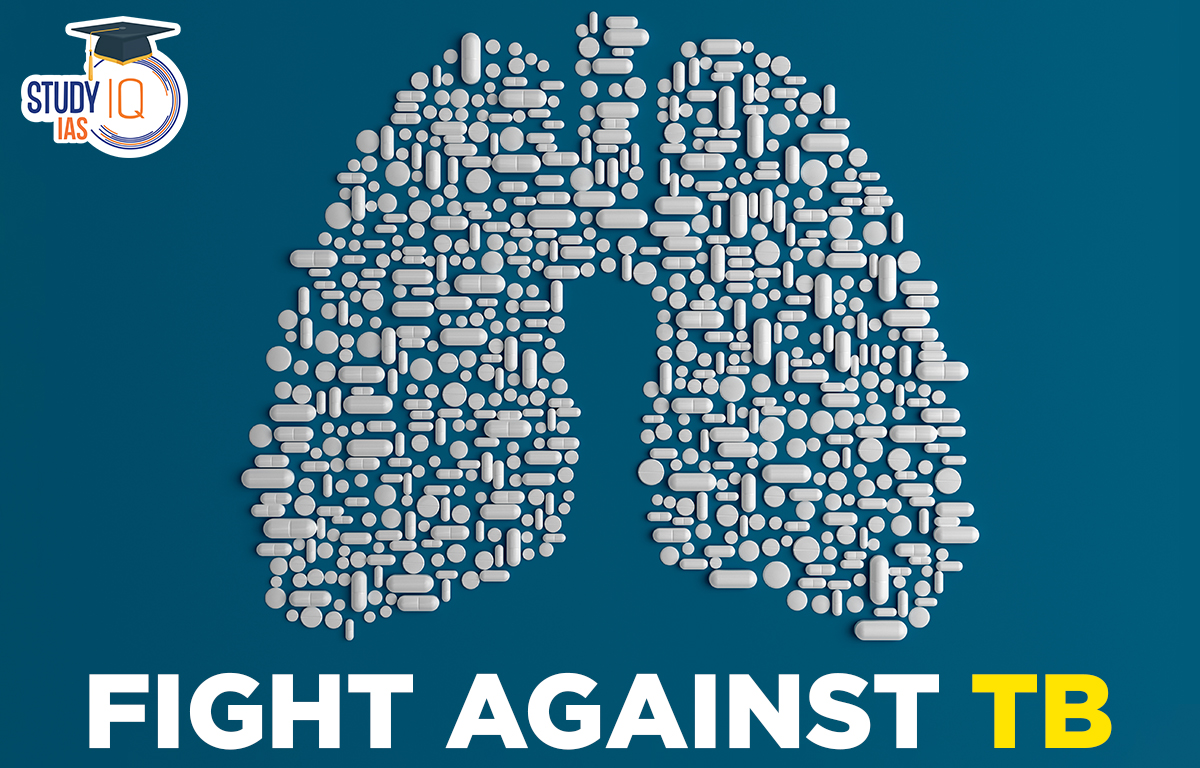Table of Contents
Context: At the One World TB Summit in Varanasi, Prime Minister of India has reiterated country’s commitment towards elimination Tuberculosis (TB).
What is Tuberculosis (TB)?
- Tuberculosis (TB) is a communicable disease that is a major cause of ill health and one of the leading causes of death worldwide.
- TB is caused by the bacillus Mycobacterium tuberculosis, which is spread when people who are sick with TB expel bacteria into the air.
Prevalence of TB
- Global: An estimated 10·6 million people became ill with tuberculosis in 2021, compared with 10·1 million in 2020, and 1·6 million people died from tuberculosis in 2021.
- The COVID-19 pandemic continues to have a damaging impact on access to TB diagnosis and treatment and the burden of TB disease.
- Its immediate impact was a large global drop in the reported number of people newly diagnosed with TB.
- India: The recent National TB Prevalence Survey (in India) found that 64% of people with infectious TB did not seek care. National-level estimates suggest that for every person notified with TB, we miss detecting almost two more cases.
- According to the Global TB Report, 2022, the incidence of TB in India has reduced by 18% from 256/lakh population in 2015 to 210/lakh population in 2021.
How can India Lead in Global TB Elimination?
- Focusing on Health in G20: India identified concerns of global importance as health priorities under its G20 Presidency. These include:
- Improving effectiveness and reach of health services using digital solutions;
- Strengthening cooperation to enhance pharmaceutical development and manufacturing capabilities;
- Dealing with anti-microbial resistance;
- Focusing on ‘One Health’.
- Enhancing Research Capabilities: India has long recognised the importance of investing in health research and development. Indian Council of Medical Research (ICMR) and its associated institutes are working to strengthen testing, reporting and treatment & generate evidence to achieve the target of eliminating Tuberculosis (TB) by the year 2025.
- ICMR institutes like National Institute for Research in Tuberculosis (NIRT) has completed the world’s largest National Tuberculosis Prevalence Survey which helped India understand the TB burden at the state level for targeted programmatic interventions.
- The Standard Treatment Workflow (STW) for Management for Extra-pulmonary TB & Pediatric TB by ICMR aims to empower the primary, secondary and tertiary care physicians towards TB elimination by increasing detection of Pediatric TB and Extra-pulmonary TB.
- India is moving towards the establishment of centres of excellence, which will facilitate collaboration between ICMR laboratories and the private sector. It will help India (and other developing countries) meet the End TB targets.
- Prioritize TB vaccine Trials: India must prioritize and find an effective TB vaccine. The Bacille Calmette-Guérin (BCG) vaccine for is used for TB, but it does not adequately protect adolescents and adults who are at the highest risk for developing and spreading TB.
- There are currently over 15 TB vaccines in the pipeline; India must ensure that their clinical trials are prioritized to assess their efficacy in various community settings and for different target groups.
- Diagnostic Tests: Testing for, and diagnosing TB needs to become more accessible and affordable so much so that each person with suggestive symptoms or frontline worker can test and get results within minutes, at minimal costs.
- New innovations such as nasal and tongue swab-based tests for TB can be a game changer by reducing diagnostic delays.
- Further, handheld digital x-ray machines can now be taken to villages and urban settlements to screen large numbers of high risk individuals, safely and conveniently.
- New Therapeutic Molecules: The development and introduction of new therapeutic molecules can play a crucial role in eliminating TB.
- Shorter, safer, and more effective regimens do exist and include the 1HP regimen for latent TB infections, the four-month regimen (HPZM) for drug-susceptible TB, and the six-month regimen (BPaL/M) for drug-resistant TB.
- Also, India’s pharma industry meets almost 80 % of the global demand for TB drugs.
- Better Policy Framework: There needs to be better regulatory and policy frameworks so that the treatment of TB reaches to the people in time.
- India is the only country in the world to implement a Sub-National Certification (SNC) exercise, a novel scientific method through which districts are verified for their progress of elimination towards TB.
- Ni-kshay portal is an exemplary model that tracks the entire cascade of care for each TB patient in India.
Way Forward
- India has a unique position to spearhead the global TB response with its strength in technology, digital innovations, data science and epidemiology.
- India has highlighted the 5T approach (trace, test, track, treat & technology) for TB as was done for COVID.
- Ending the TB epidemic by 2030 is among the health targets of the United Nations Sustainable Development Goals (SDGs) and this requires greater collaboration between policymakers, scientists, product developers and clinical researchers across the country and even across regions and their governments.


 SSC CGL Exam 2025 Apply Online Starts Ap...
SSC CGL Exam 2025 Apply Online Starts Ap...
 Daily Quiz 19 April 2025
Daily Quiz 19 April 2025
 Vehicle-to-Grid (V2G) Technology and its...
Vehicle-to-Grid (V2G) Technology and its...





















